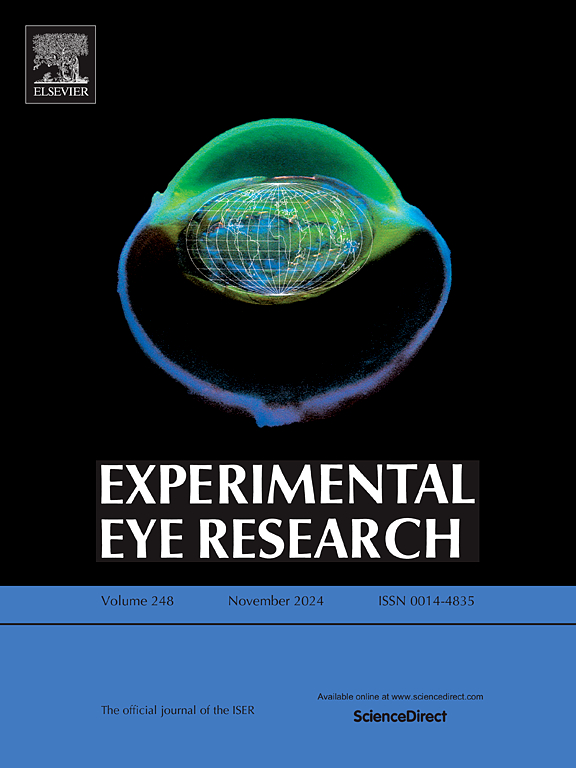Single-cell RNA sequencing reveals the role of heat shock protein 90AA1 in Müller cell proliferation via the Necroptosis/MAPK pathway in diabetic retinopathy
IF 3
2区 医学
Q1 OPHTHALMOLOGY
引用次数: 0
Abstract
This study investigates the role of heat shock protein 90AA1 (HSP90AA1) in the proliferation of Müller cells (MCs) within the context of diabetic retinopathy (DR). Using single-cell RNA sequencing (scRNA-seq) on retinal samples from four diabetic and two nondiabetic patients, we integrated bioinformatics analyses with experimental exploration using in vivo and in vitro DR models to investigate MC pathogenesis in DR. Our findings identified nine major retinal cell types and elucidated how diabetes disrupts retinal cell type composition, gene expression profiles, and intercellular communication. HSP90AA1, significantly downregulated in the MCs of the diabetic patients, emerged as a potential hub gene, with its associated pathways involving necroptosis (RIP1/RIP3/MLKL) and mitogen-activated protein kinase (MAPK) signaling. Furthermore, our results from DR models suggeste that the downregulation of HSP90AA1 may induce DR-related MC proliferation. This study provides novel insights into the cellular and molecular mechanisms underlying DR, highlighting the suppressive role of HSP90AA1 in MC proliferation as a promising therapeutic target for DR.
单细胞RNA测序揭示了热休克蛋白90AA1通过坏死性下垂/MAPK通路在糖尿病视网膜病变中 ller细胞增殖中的作用。
本研究探讨了热休克蛋白90AA1 (HSP90AA1)在糖尿病视网膜病变(DR)背景下 ller细胞(MCs)增殖中的作用。通过对4名糖尿病患者和2名非糖尿病患者的视网膜样本进行单细胞RNA测序(scRNA-seq),我们将生物信息学分析与实验探索结合起来,使用体内和体外DR模型来研究DR中MC的发病机制。我们的研究结果确定了9种主要的视网膜细胞类型,并阐明了糖尿病如何破坏视网膜细胞类型组成、基因表达谱和细胞间通讯。HSP90AA1在糖尿病患者的MCs中显著下调,成为潜在的枢纽基因,其相关途径涉及坏死坏死(RIP1/RIP3/MLKL)和丝裂原活化蛋白激酶(MAPK)信号传导。此外,我们在DR模型中的结果表明,HSP90AA1的下调可能诱导DR相关的MC增殖。这项研究为DR的细胞和分子机制提供了新的见解,强调了HSP90AA1在MC增殖中的抑制作用,作为DR的一个有希望的治疗靶点。
本文章由计算机程序翻译,如有差异,请以英文原文为准。
求助全文
约1分钟内获得全文
求助全文
来源期刊

Experimental eye research
医学-眼科学
CiteScore
6.80
自引率
5.90%
发文量
323
审稿时长
66 days
期刊介绍:
The primary goal of Experimental Eye Research is to publish original research papers on all aspects of experimental biology of the eye and ocular tissues that seek to define the mechanisms of normal function and/or disease. Studies of ocular tissues that encompass the disciplines of cell biology, developmental biology, genetics, molecular biology, physiology, biochemistry, biophysics, immunology or microbiology are most welcomed. Manuscripts that are purely clinical or in a surgical area of ophthalmology are not appropriate for submission to Experimental Eye Research and if received will be returned without review.
 求助内容:
求助内容: 应助结果提醒方式:
应助结果提醒方式:


